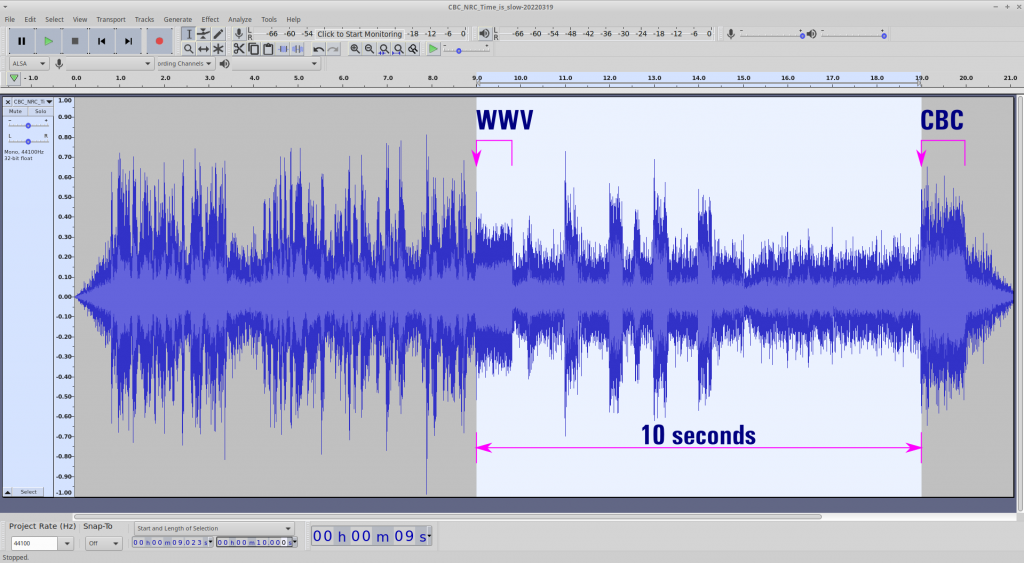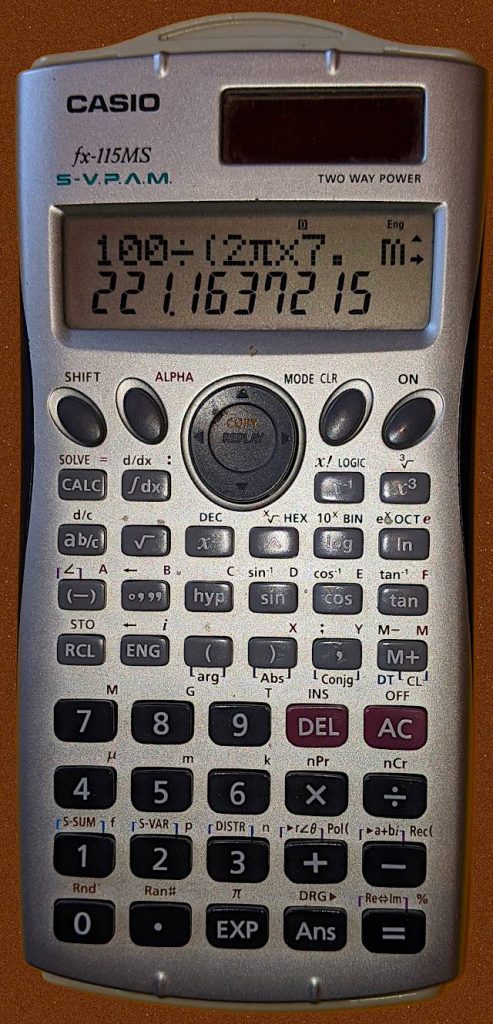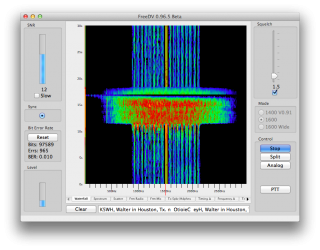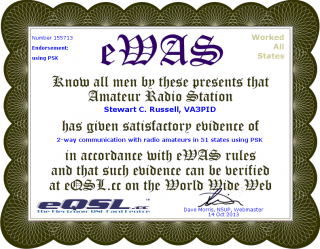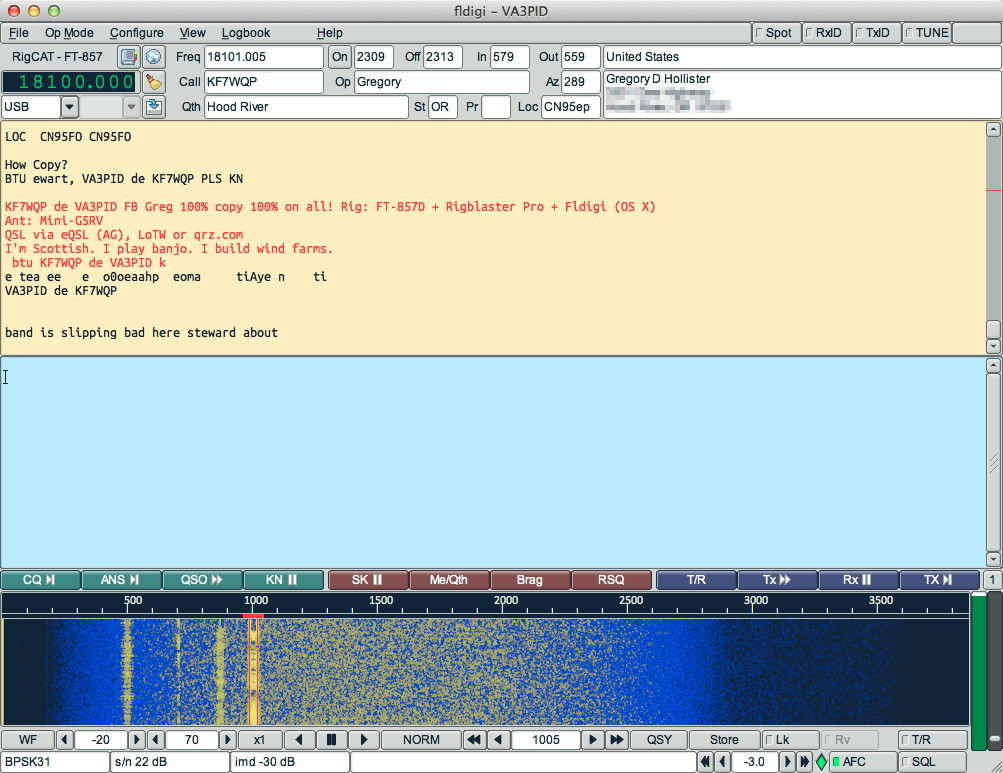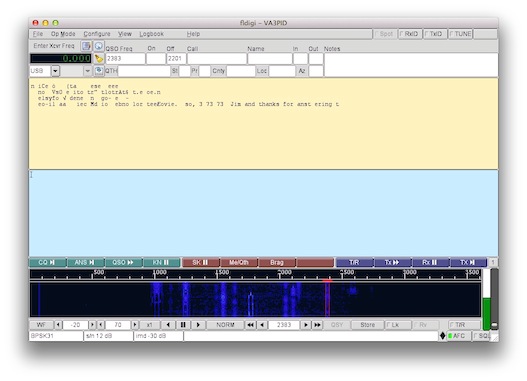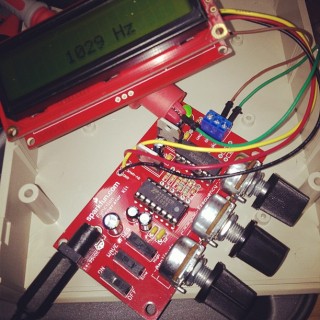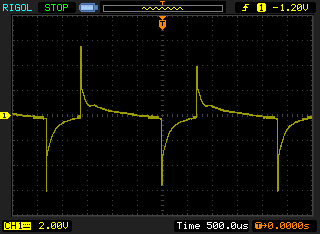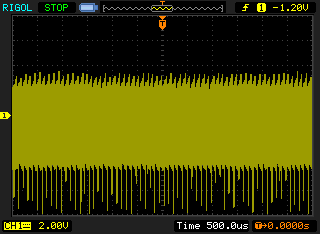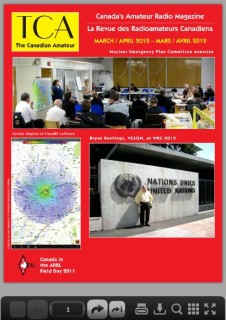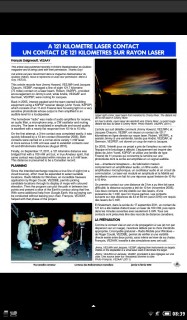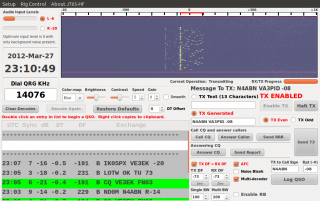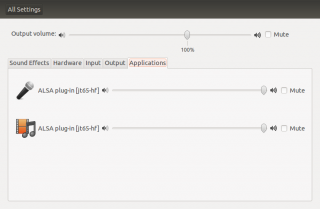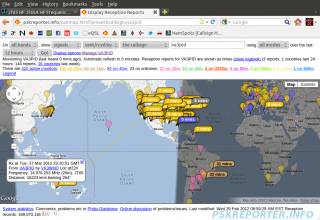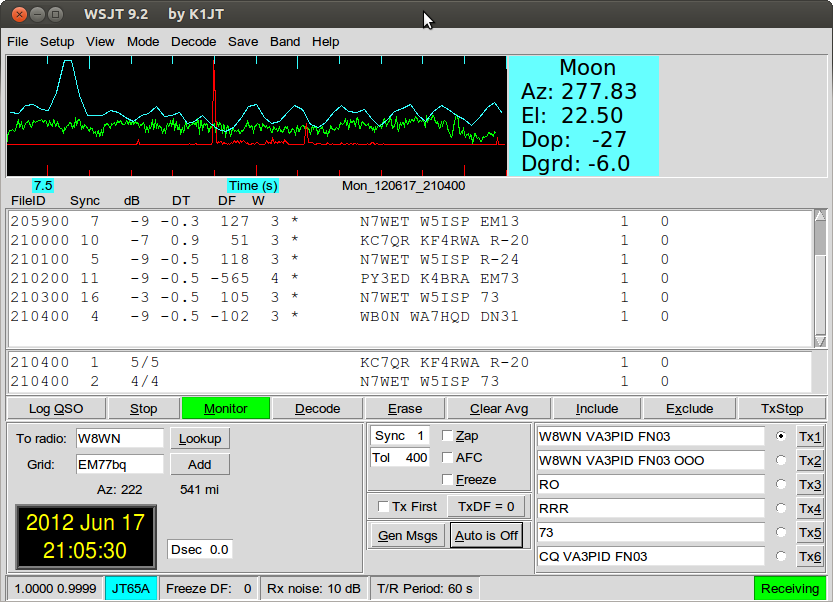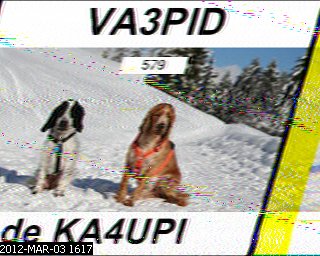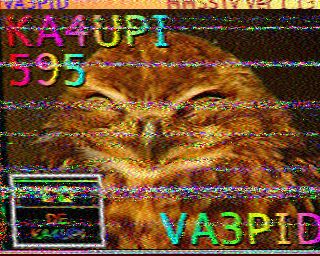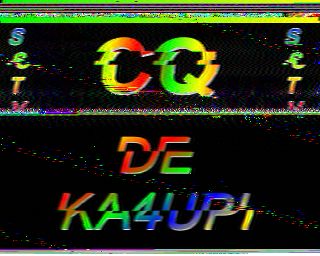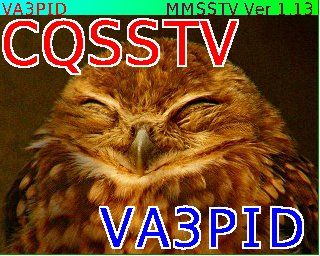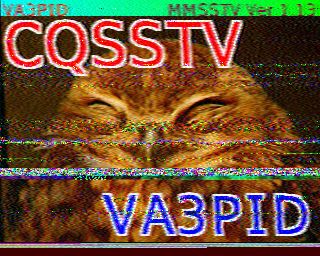So I went to Hamvention for the first time. I knew it was a big deal when I tried to book a hotel a couple of weeks before, and everything within 25km was full. Even my dodgy distant motel was full of hams, and the Perkins next door couldn’t handle the breakfast rush.
Hamvention is huge. Radio amateurs from all over the world come to Dayton to meet, look at the shiny new stuff, buy things they can actually afford, and paw over the junk valuable items in the fleamarket. The fleamarket’s the size of a small European country.
One obnoxious item I must get out the way is the amount of anti-government sloganeering on trucks, shirts and hats. I could do without that. For a hobby that wouldn’t exist without strong government regulation (and users sometimes go crying to government when someone doesn’t play by the rules), anti-government sentiment seems inane. Okay, that’s my rant over.
The fleamarket is basically where a lot of things that really should be snoozing away the millenia in a landfill come out every year to get aired. Sure, there’s some neat stuff in all those stalls, but you’d have to rummage and bargain. I was only there for a day and a half, and I’m trying to cut down on junk, so I was mostly in the fleamarket for the lulz. Here are some of the things I saw:

A real teletype

Tesla coils

Geiger counters, lots of ’em (all non-functioning)

n8prk‘s line launchers. Every few minutes he’d launch a marshmallow, which disappeared into the sky with a satisfying “Foomp!”

Duplex cavities and repeaters. The big tanks at the back are for the 10m band.

Too many antennas, sorry.

Real wartime enigma machines. I think the price sticker said $90,000.

Old apple tech.

Tiny UHF repeater cavities from Paladin RF (aka Honest Bob Morton of Maple Leaf Communications)

Nixies!

Good stuff, or junk?

WB4APR’s old school monocrystalline solar modules

WB4APR’s solar spinny thing

WB4APR’s charge socket on his Prius.

Bob WB4APR’s prius. Bob’s quite well known for creating APRS: Automatic Packet Reporting System.

WB4APR’s prius, from the rear.

A wire recorder. Julian Koster would be proud!

Old Ataris.

The Elecraft KX3 is the new hotness (if you wear a cap). I had to fight to even get a glance at this thing.

Various morse bugs. I ended up buying a Code Warrior Junior.

A very purple (and very expensive) Hilberling radio.

Begali testbed.

London, Gerry from the Unseen Bean’s helper. It is good coffee.

Tubes, or valves.

More valves, or tubes.

Petrol engine from a Maytag washing machine from pre-REA days.

Hams dream in Heathkit green.

You couldn’t afford a Hallicrafters then, and you probably still can’t.

Too big, and too many solar panels.

Civil defence radio, basically a 2m AM(?) HT. If anyone says that tubes are better than solid state, show them this.

An edison cylinder, playing “Blue Ridge Mountains of Virginia”. It sounded good.

Yaesu green

More Enigma.

Russian data burst encoders. I remember a news piece on these around 1974; was there a spy bust in the UK then?

Two Nagras for Nesey. You might not be able to see the tiny one inside the big one’s case.

Too too many antennas — don’t be that guy.

A QRPme kit. I sat in on the QRP session. Interesting, but clutter-inducing. MUST SHUN!!!

QRPme kit 2

QRPme PIC kit

Too many APRS users. Seriously, 144.39 sounded like the frog chorus being sick all the time.
I only met one ham I’d worked; Joe (KJ8O) of the Feld Hell Club. I’ve only had my licence for a year, so not really a big surprise. Mad props to Russ of Linux in the Ham Shack for correctly guessing my accent, possibly a first.
I have to say that the event was extremely well organized. They’d teamed up with Dayton Transit to have buses from the free parking to the event. I didn’t have to wait once, though it was clear that most hams aren’t habitual bus riders. I enjoyed my time in the sorrowful midwest; I might go back every other year.
